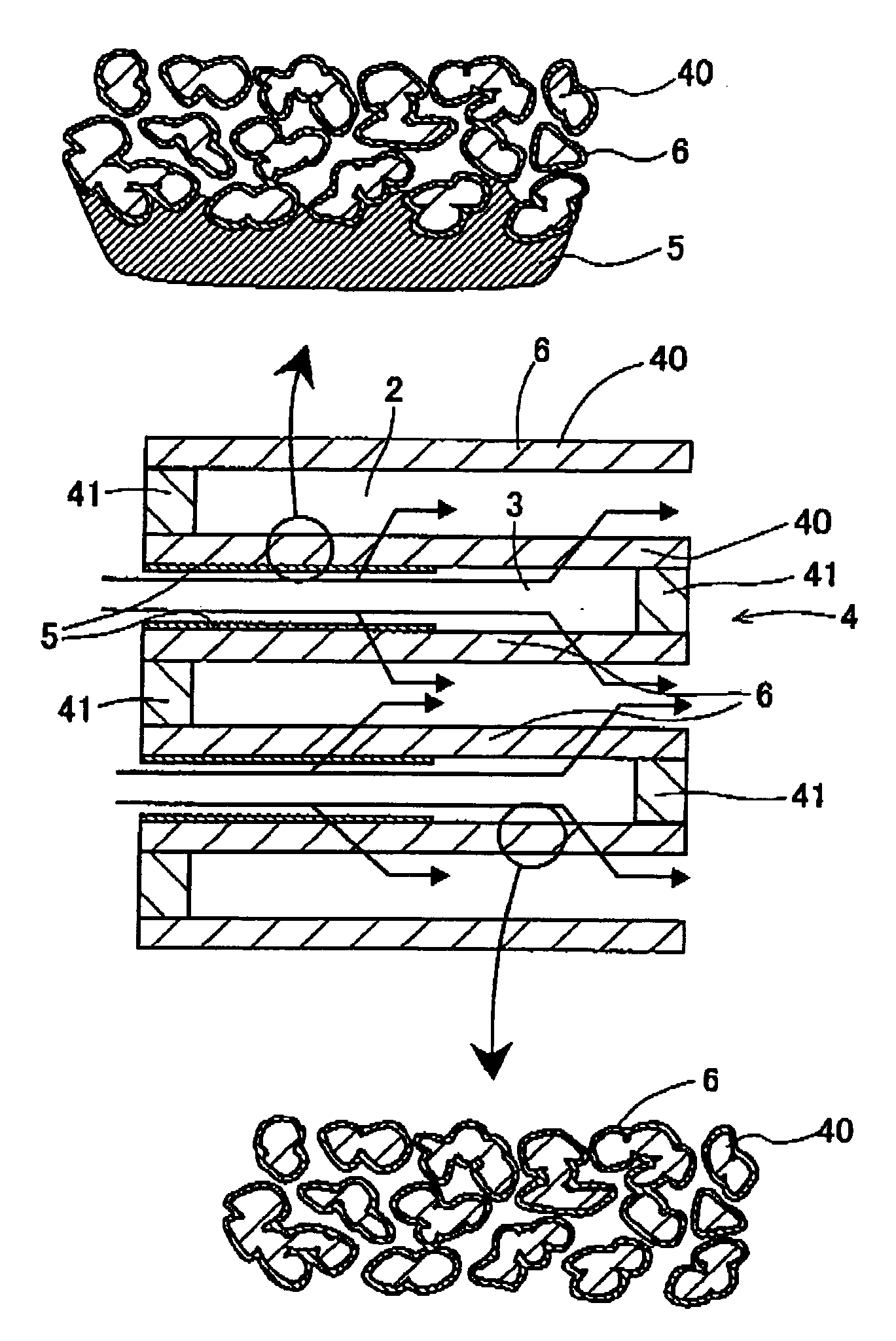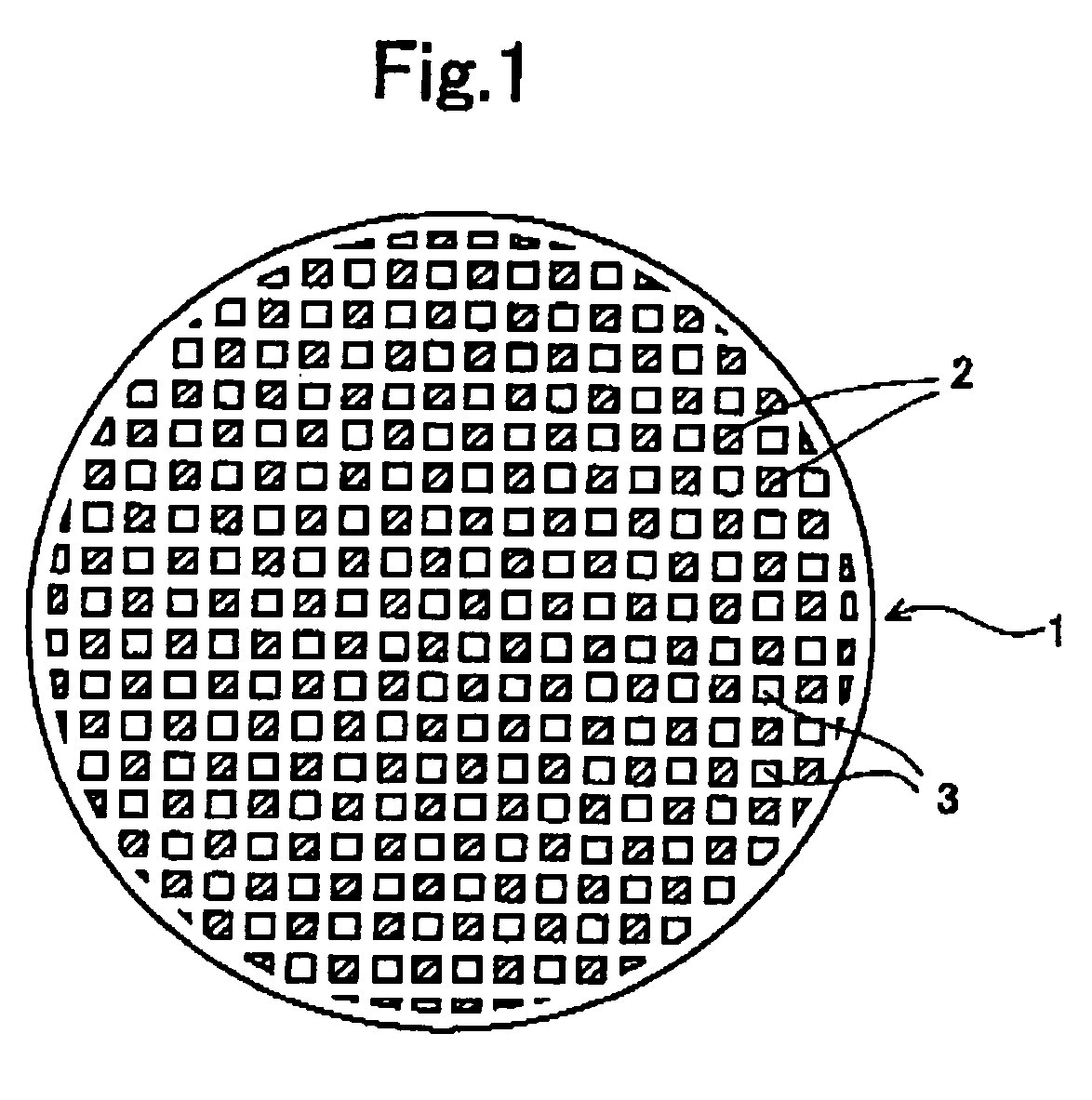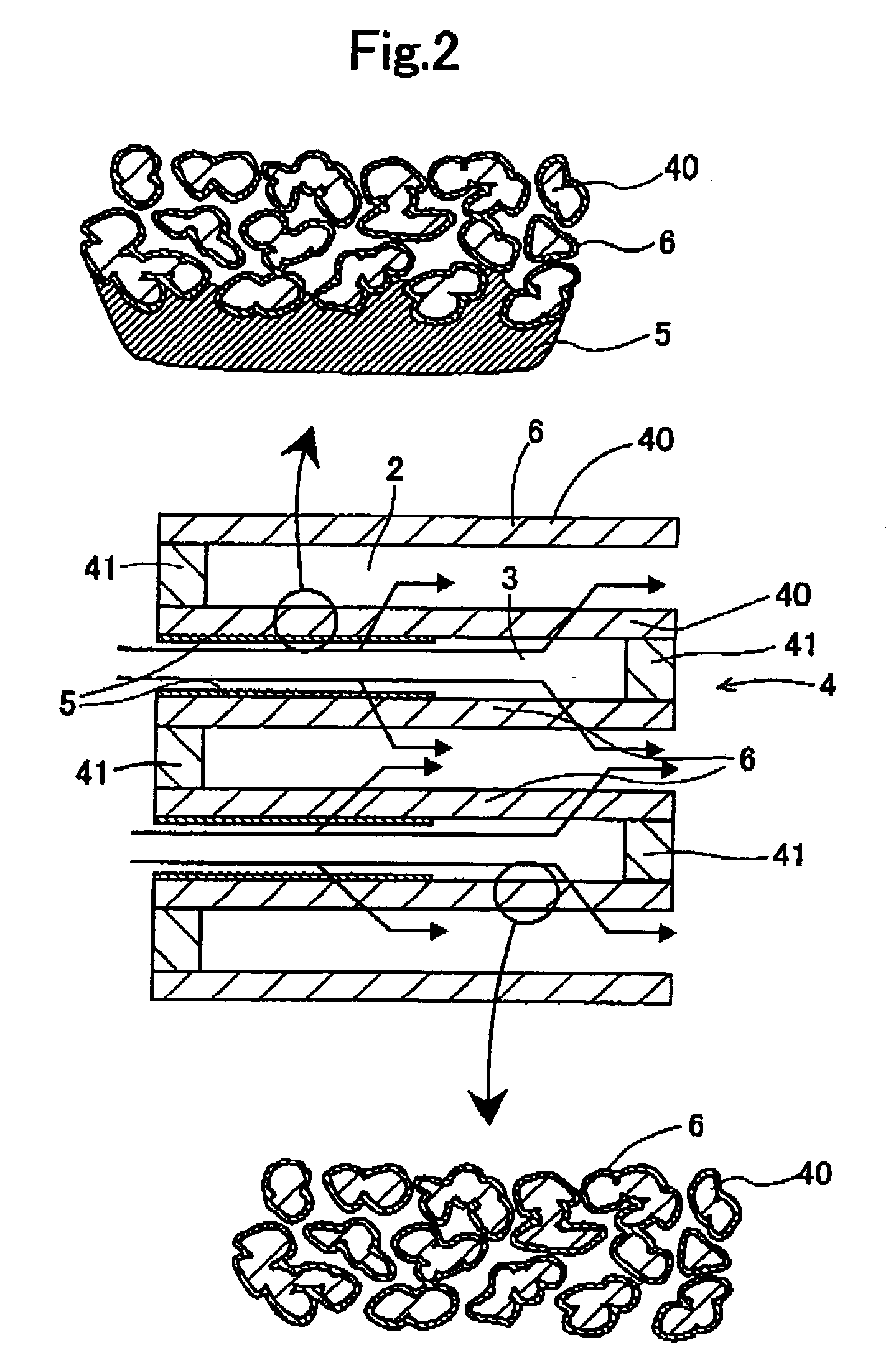Filter catalyst
a filter catalyst and catalyst technology, applied in the field of filter catalysts, can solve the problems of not purifying the gaseous component, the catalytic layer has a lower gas dispersibility property, and the exhaust gas pressure loss, etc., to promote decomposition, promote decomposition and purification of particulates, and shorten the time period
- Summary
- Abstract
- Description
- Claims
- Application Information
AI Technical Summary
Benefits of technology
Problems solved by technology
Method used
Image
Examples
example 1
[0050] Firstly, a slurry A to be coated on a catalyst-supporting substrate 1 shown in FIG. 1 was prepared. FIG. 1 is an upper end surface of a catalyst-supporting substrate 1. When preparing the slurry A, alumina (Al2O3) powder was put into a deionized water, and a solution was stirred so that the alumina powder was dispersed into the deionized water. Then, by subjecting the solution to a milling operation, the slurry A was prepared. The alumina dispersed into the slurry A has an average particle diameter of 0.8 μm.
[0051] Then, the prepared slurry A was coated on the catalyst-supporting substrate 1, as shown in FIGS. 1 and 2. FIG. 2 is an axial cross-sectional view of a filter catalyst 4. The honeycomb-shaped catalyst-supporting substrate 1 made of a cordierite has substantially circular tubular shape as a whole, and has an outer diameter of 129 mm, an axial length of 150 mm and 2 liters apparent volume, respectively. The catalyst-supporting substrate 1 has plural cells 2 and plura...
example 2
[0062] The slurry A was prepared and was coated on the catalyst-supporting substrate in the same manner as the Example 1, to form the second loading layer. The slurry A was coated on the whole catalyst-supporting substrate. After drying of the slurry A, the catalyst-supporting substrate was weighed. As a result, loading of the alumina by loading amount of 100 g per the 1 liter apparent volume of the catalyst-supporting substrate was confirmed. Also confirmed was that the alumina loading layer produced by the slurry A was formed on the inside surface of the pores of the cellular wall in substantially uniform thickness, similar to the second catalytic portion of the Example 1.
[0063] Then, the slurry 8 was prepared and coated on the catalyst-supporting substrate in the same manner as the Example 1, to form the first loading layer. The slurry B was coated on the surface of the cellular wall, in an area spreading from the upstream end to a 50 mm point away from the upstream end. The ope...
example 3
[0068] The slurry A was prepared in the same manner as the Example 1, and was coated on the catalyst-supporting substrate in the area spreading from the downstream end to a 75 mm point away from the downstream end, to form the second loading layer. After drying of the slurry A, the catalyst-supporting substrate was weighed. As a result, loading of the alumina by loading amount of 75 g per the 1 liter apparent volume of the catalyst-supporting substrate was confirmed. Also confirmed was that the alumina loading layer produced by the slurry A was formed on the inside surface of the pores of the cellular wall in substantially uniform thickness, similar to the second catalytic portion of the Example 1.
[0069] Then, the slurry B was prepared and coated on the catalyst-supporting substrate in the same manner as the Example 1, to form the first loading layer. The slurry B was coated on the surface in the area spreading from the upstream end to a 75 mm point away from the upstream end of th...
PUM
| Property | Measurement | Unit |
|---|---|---|
| Particle diameter | aaaaa | aaaaa |
| Particle diameter | aaaaa | aaaaa |
| Temperature | aaaaa | aaaaa |
Abstract
Description
Claims
Application Information
 Login to View More
Login to View More - R&D
- Intellectual Property
- Life Sciences
- Materials
- Tech Scout
- Unparalleled Data Quality
- Higher Quality Content
- 60% Fewer Hallucinations
Browse by: Latest US Patents, China's latest patents, Technical Efficacy Thesaurus, Application Domain, Technology Topic, Popular Technical Reports.
© 2025 PatSnap. All rights reserved.Legal|Privacy policy|Modern Slavery Act Transparency Statement|Sitemap|About US| Contact US: help@patsnap.com



